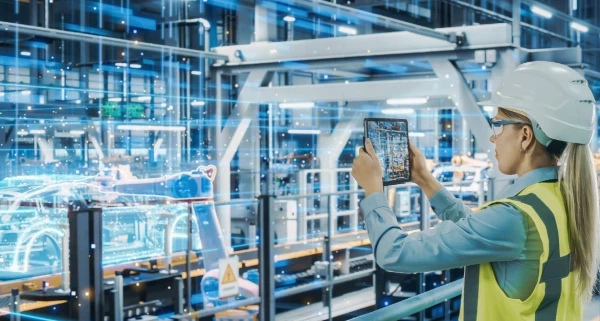Is your organization ready for hyperautomation?
How a system comprising RPA, AI and machine learning can make decisions, consistently improve itself and create value for businesses
Add bookmark
Hyperautomation combines multiple digital strategies to enhance automation capabilities by expanding on the established practice of automation, which sees organizations deploy bots to complete tasks traditionally completed by humans. Beyond automating simple tasks, hyperautomation allows aspects of decision-making to be automated across an organization through the application of technologies such as artificial intelligence (AI).
The prevalence of hyperautomation application in organizations looking to optimize the efficiency of business processes is on the up, with Gartner placing it top of its list on 10 strategic technology trends for 2020. Below, PEX Network outlines three technologies that form part of the trend of hyperautomation and how it can add value to businesses.
Robotic process automation
Robotic process automation (RPA) transforms the way organizations look to reduce cost and add value. Following reports of record levels of RPA investment in 2020, RPA is already helping many organizations to enhance business results, while the application of advanced technologies alongside the technology is taking it to the next level.
RPA forms the core of the hyperautomation methodology, with various other technologies bolted on to enhance its capabilities. Essentially, RPA is the application of software or bots, primarily to automate tedious, rule-based business processes.
Artificial intelligence
While RPA is sufficient for basic, repetitive tasks, automating the more complex, less standardized ones that may require some decision-making requires a more agile, powerful and intelligent approach. Combining AI and RPA provides the convenience and labor reductions of automation while enabling the insights, analytics and processing power of AI.
This presents a number of possible use cases that would not be possible without the use of AI in hyperautomation methodology. For example, organizations in the banking industry have been applying it to combat fraud as AI systems are far more capable than humans at detecting data discrepancies that could signal fraud, and they are able to do this at massive scale and speed. By allowing this to happen automatically, banks and financial service organizations can ensure the safety of their customers’ finances.
Machine learning
Machine learning (ML) can further augment an AI system, so that it has the ability to detect and analyze patterns in data autonomously and learn from them to develop itself.
Augmenting AI systems through ML gives them the ability to make real-time decisions based on sets of data that are so large that it is impossible for humans to process them. Every time these systems make decisions or perform actions, the results inform future similar situations which constantly improve the accuracy and efficacy of the systems.
Lessons learned
To summarize, hyperautomation is born when RPA is augmented through advanced technologies such as AI and ML. These are not the only tools and technologies that can turn standard automation into hyperautomation, along with many other techniques such as process mining as featured in PEX Network’s recent process mining report, which has been shown to pair effectively with automation.
New ways of augmenting the automation process will only become more common as organizations begin to adopt the concept of hyperautomation and look to maximize efficiency. Early adopters of this methodology can begin to implement not just a system of AI, ML and automation that consistently improves itself but also work on fostering a mindset that is conducive to the implementation and improvement of the hyperautomation methodology.





























